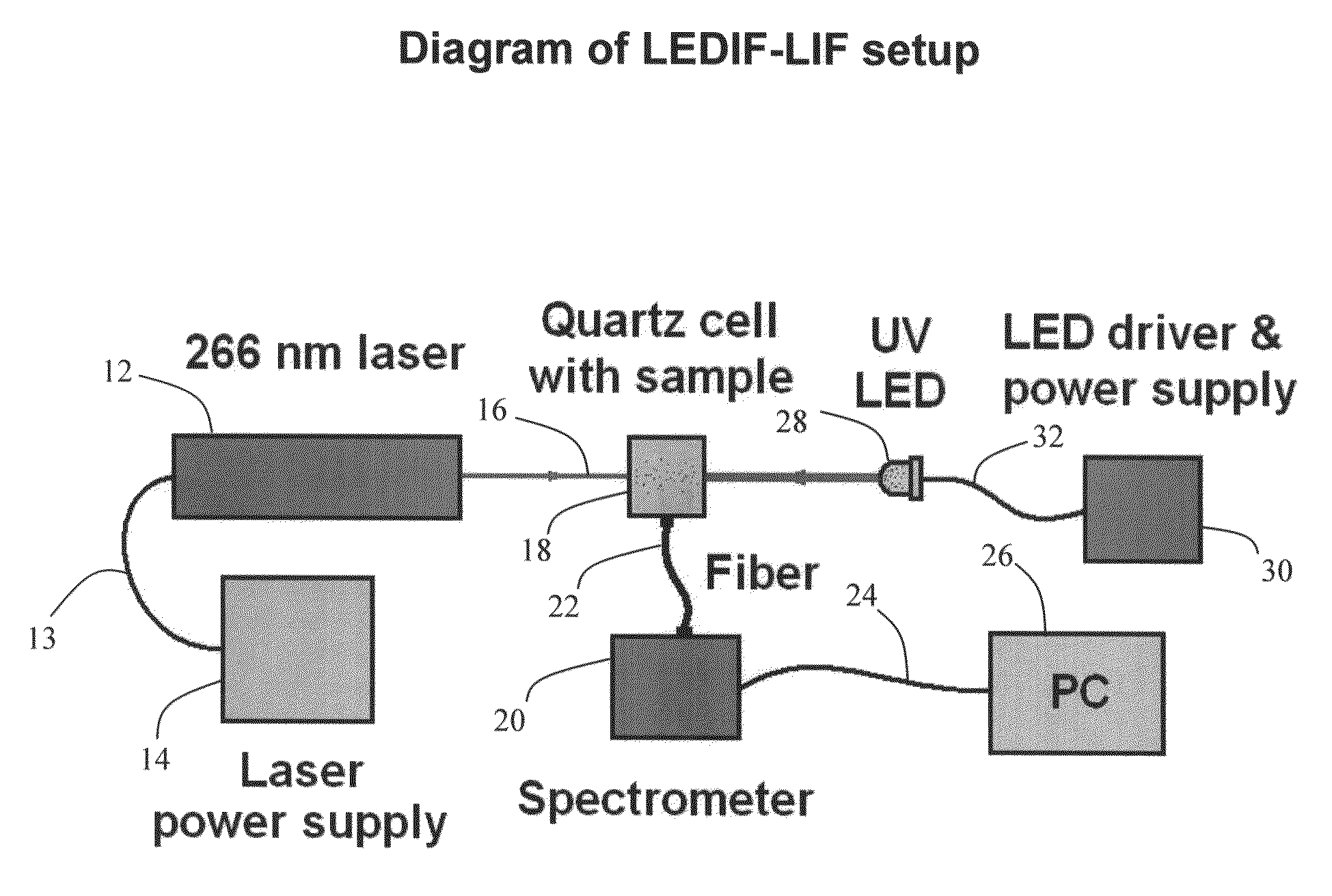Deep-UV led and laser fluorescence apparatus for monitoring water quality
a technology of fluorescence apparatus and led light, applied in the direction of optical radiation measurement, instruments, spectrophotometry/monochromators, etc., can solve the problems of insufficient separation of blue-green wavelengths, inability to use fluorescent dyes in natural or auto-fluorescence studies, and inability to achieve the effect of reducing background noise, improving signal-to-noise ratio, and increasing sensitivity
- Summary
- Abstract
- Description
- Claims
- Application Information
AI Technical Summary
Benefits of technology
Problems solved by technology
Method used
Image
Examples
Embodiment Construction
[0047]Conventional methods of water analysis can achieve a high degree of sensitivity necessary for water quality monitoring, but they often require special sample preparation, additional reagents or chemicals, and often are not conducted in real time or on-line.
[0048]Deep ultraviolet (UV) laser-induced fluorescence (LIF) is effective for the detection of trace levels of dissolved organic compounds (DOCS) in water at the parts per billion (ppb) to parts per trillion (ppt) detection level. The instrument used to perform the steps of this invention is a laboratory-developed pulsed laser-induced fluorescence system. Said instrument is different from conventional, commercially-available fluorescence spectrofluorometers in that such spectrofluorometers typically include a continuous wave (CW) xenon emission lamp, a grating spectrometer for excitation, and a spectrometer for emission analysis. The novel system uses a chopped (about 200 Hz) CW excitation source, so the signal processing in...
PUM
 Login to View More
Login to View More Abstract
Description
Claims
Application Information
 Login to View More
Login to View More - R&D
- Intellectual Property
- Life Sciences
- Materials
- Tech Scout
- Unparalleled Data Quality
- Higher Quality Content
- 60% Fewer Hallucinations
Browse by: Latest US Patents, China's latest patents, Technical Efficacy Thesaurus, Application Domain, Technology Topic, Popular Technical Reports.
© 2025 PatSnap. All rights reserved.Legal|Privacy policy|Modern Slavery Act Transparency Statement|Sitemap|About US| Contact US: help@patsnap.com



